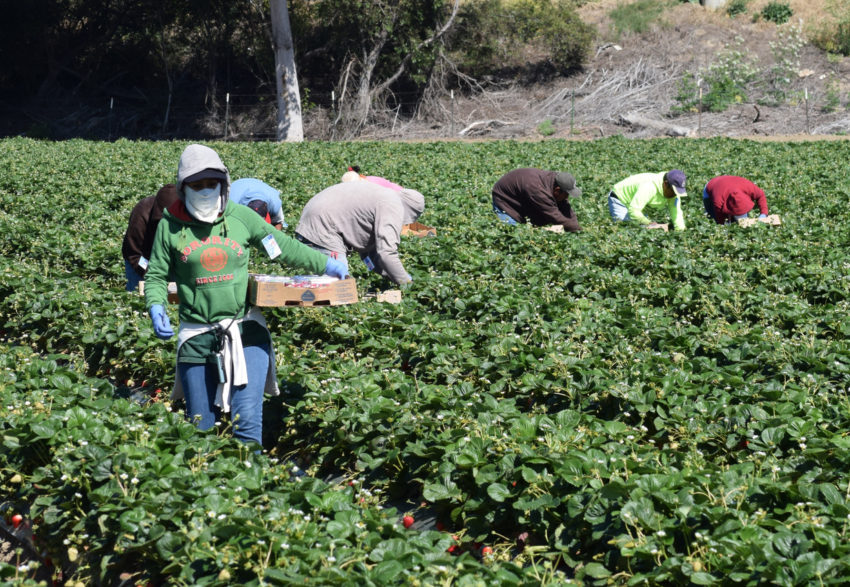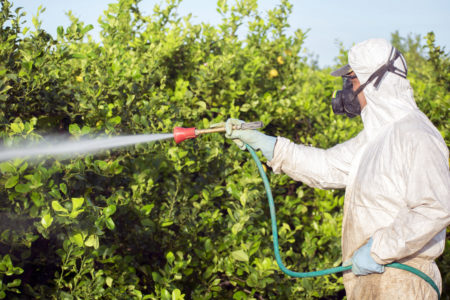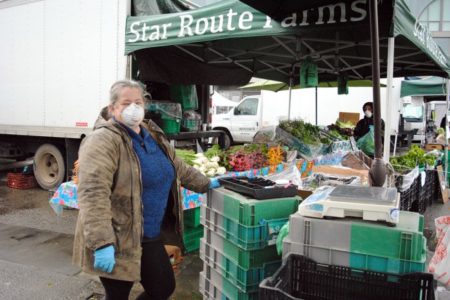
Share On Social!
Nearly three-fourths of all coronavirus cases in some of the country’s most critical industries are happening among Latinos, the group already experiencing harsh burdens from the virus.
Of the 5,721 workers in food processing, food manufacturing, and agriculture fields who tested positive for COVID-19 early in the outbreak, 72.8% were Latino, according to October 2020 data from the CDC.
These numbers shouldn’t come as a total surprise, based on the conditions these laborers face in the workplace, said Dr. S. Patrick Kachur, a population and family health professor at Columbia University.
“Workers come and go from the workplace on a daily basis,” Kachur told TODAY Food. “If they are living in communities with widespread transmission, or households with other persons who become infected, it is likely that they will bring the virus to work and potentially infect others, even if they are not ill.
“Black and Latinx workers may live in communities already facing a higher risk of exposure and are more prone to some of the factors that can increase their risk of becoming infected or seriously ill.”
Rural, Low-Income Latinos Face Greatest Risks
The CDC’s numbers paint a grim picture for food processing, food manufacturing, farming, and agriculture.
Of the positive tests among this group:
Although they make up a majority of the workers in this industry, the high rates of cases and related outcomes are a great concern, according to the CDC researchers behind the recent report.
Especially, they say, when the fact that 83.2% of all positive cases were found among people of color.
“Our study supports findings from prior reports that part of the disproportionate burden of COVID-19 among some racial and ethnic minority groups is likely related to occupational risk,” the CDC researchers write. “These findings support the need for comprehensive testing strategies, coupled with contact tracing and symptom screening, for high-density critical infrastructure workplaces to aid in identifying infections and reducing transmission within the workplace.
“[The data] should be considered when implementing workplace interventions to ensure communication and training are culturally and linguistically tailored for each workforce.”
Latino Workers and COVID-19
Worse, this comes when people of color are experiencing a host of complications due to COVID-19. A recent study from the University of California Merced illustrates this fact through the lens of Latino immigrants in California.
“Latinx immigrant families in rural areas pay a triple toll during the pandemic: a higher risk of COVID-19 infection, severe financial insecurity due to out-of-pocket expenses on protective measures, and resulting food insecurity and mental health risks — all with very limited access to safety-net assistance,” said Maria-Elena Young, the study’s principal investigator and an assistant professor at the University of California Merced, according to a press release.
Due to this being a global issue, change needs to come from the top down. Researchers at the CDC recommend major shifts in the workplace.
“Reducing workplace exposures is critical for protecting workers in US food processing, food manufacturing, and agriculture workplaces and might help reduce health disparities among disproportionately affected populations,” the CDC researchers write. “Adherence to workplace-specific intervention and prevention efforts likely would protect both workers and surrounding communities.”
These efforts include:
- Greater use of physical distancing
- Proper sanitation, cleaning, and disinfection
- Providing personal protective equipment
Check out the Salud America! “Juntos, We Can Stop COVID-19” campaign to get bilingual materials to share to help Latinos slow the coronavirus spread.
What You Can Do
The government’s top health minds say one of the best ways to fight COVID-19 is to address the situation from a bird’s eye view.
“Comprehensive evaluations in food processing, food manufacturing, and agriculture workplaces and communities are needed to clarify and address risk factors for SARS-CoV-2 transmission among workers,” the CDC researchers write. “Several factors at the individual-, household-, community-, and occupational-level, including long-standing health and social disparities, likely contribute to disproportionate disease incidence among racial and ethnic minority workers.”
Still, individual action is needed to promote systemic change.
One way to do this is by downloading the free Salud America! “Get Your City to Declare Racism a Public Health Crisis Action Pack”!
The Action Pack will help you gain feedback from local social justice groups and advocates of color. It will also help you start a conversation with city leaders for a resolution to declare racism a public health issue along with a commitment to take action to change policies and practices. It will also help build local support.
Dr. Amelie G. Ramirez, director of Salud America! at UT Health San Antonio, created this Action Pack with input from several San Antonio-area social justice advocates.
Explore More:
Overcoming Harmful BiasesBy The Numbers
3
Big Excuses
people use to justify discriminatory behavior





